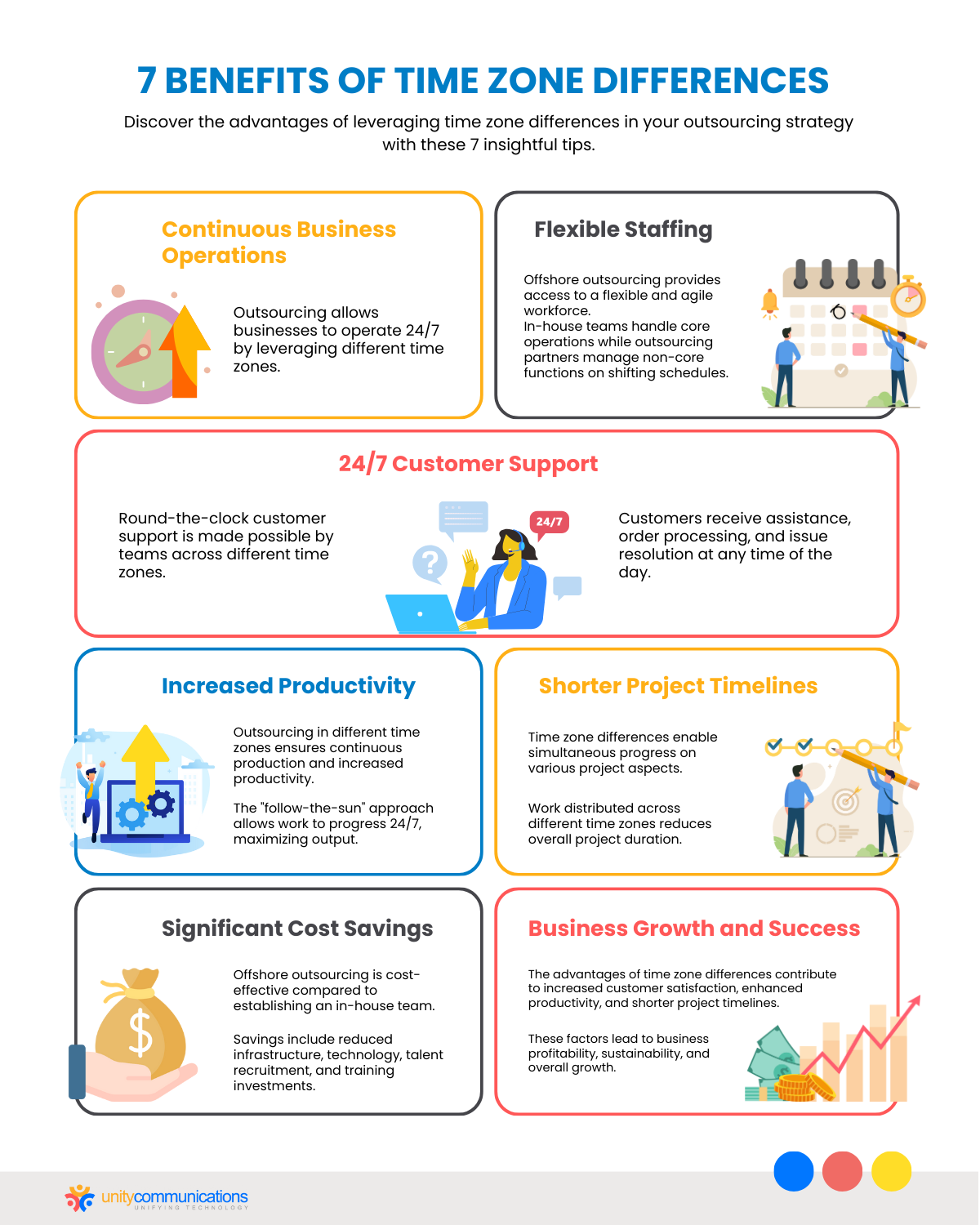In the era of digital nomads and virtual teams, harnessing the power of remote work has become increasingly vital for companies looking to expand their talent pool. Time zone advantages play a critical role in this dynamic, especially when considering the synergistic relationship between Latin America and the U.S.
With countries like Mexico, Colombia, and Argentina offering a wealth of skilled professionals, the geographical proximity of Latin America to the United States presents unique opportunities for real-time collaboration and productivity gains. Let’s explore how remote work bridges these regions and the advantages it brings to the table.
The Role of Time Zones in Remote Work Success: LATAM vs. Asia-Pacific
Time zones can either be a hurdle or a catalyst when it comes to remote work. While Asia-Pacific regions may offer a vast talent pool, the significant time difference often poses challenges for synchronization and immediate communication. Conversely, the time zone alignment between Latin America and the U.S. facilitates a more integrated workday, allowing teams to collaborate in real-time.
This proximity not only streamlines workflow but also ensures that daily stand-ups, agile sprints, and client meetings can occur within the same working hours, enhancing overall efficiency. Furthermore, Latin American countries often boast a robust infrastructure well-suited for remote work, enabling seamless connectivity with U.S. counterparts.
By leveraging the similar working hours, U.S. companies can maximize their workday overlap with Latin American teams, leading to faster turnaround times and continuous project momentum.

It’s no wonder that many organizations appreciate the time zone benefits for U.S. companies hiring in LATAM, as it allows for a more agile and responsive business environment. Real-time interactions lead to quicker decision-making and a more dynamic exchange of ideas.
How Do Time Zones Impact Remote Work Efficiency?
Efficiency in remote work isn’t just about the number of hours worked; it’s about the effectiveness of those hours. Time zones have a direct impact on the window of opportunity for real-time collaboration between teams. Employees working in similar time zones can respond to each other’s queries, brainstorm, and problem-solve without the delays that come with asynchronous communication.
In contrast, when teams are scattered across drastically different time zones, there’s a higher reliance on asynchronous work, which may slow down processes that require immediate feedback or verification. Strategic planning around time zones can result in more productive and efficient workflows that take advantage of peak working hours.
What Are the Time Zone Alignments Between Latin America and the U.S.?
The time zone overlaps between LATAM and the U.S. mean that many Latin American countries are only a few hours ahead or behind U.S. Eastern Standard Time. For instance, Mexico City operates on Central Time, which aligns perfectly with several U.S. cities. Colombia and Peru are just one hour ahead of Eastern Time, making coordination straightforward.
These alignments can be leveraged to ensure that meetings and collaborative work sessions can be scheduled during times that are convenient for all participants, thus enhancing productivity through time zone alignment.

How Can U.S. Companies Benefit from Hiring LATAM Talent?
- The ability to tap into a diverse talent pool with a range of expertise and innovative perspectives.
- Cost efficiencies due to favorable economic conditions in many Latin American countries.
- The bilingual skills of Latin American professionals, which can be particularly advantageous for businesses operating in global markets.
Moreover, the cultural values shared between LATAM and the U.S. can aid in smoother integration of teams and better understanding of U.S. markets by LATAM employees.
What Challenges Do Latin American Professionals Face in Remote Work?
Despite the benefits, Latin American professionals may face challenges such as language barriers, differences in work culture, or a lack of access to the latest technologies. Companies can address these by providing language training, cultural exchange programs, and ensuring their teams have the technical resources needed for their work.
 Why US companies are hiring virtual assistants from Latin America (and why you should too)
Why US companies are hiring virtual assistants from Latin America (and why you should too)How to Leverage Time Zone Advantages for Effective Team Collaboration?
Companies can structure workloads to align with the peak productivity times of their team members, ensuring that everyone is working effectively. Communication protocols can also be established to manage expectations on response times and availability. Moreover, utilizing project management tools that accommodate different time zones can help keep everyone on track.
What Are the Key Characteristics of Latin American Professionals?
Latin American professionals are often recognized for their strong work ethic, adaptability, and creativity. Many are also bilingual, offering valuable language skills for international business. Their proficiency in both English and Spanish can be a significant asset for U.S. companies engaging with diverse markets.
Related Questions on Time Zone Advantages and Remote Work
How Many Time Zones Does South America Have?
South America spans four main time zones, ranging from UTC-5 to UTC-2. This diversity means that there are multiple windows for real-time collaboration with U.S. counterparts, depending on the specific countries involved.

What Are the Time Zones in North America?
North America includes six time zones, from the Pacific Time Zone (UTC-8) to the Eastern Time Zone (UTC-5). These time zones align closely with those of many Latin American countries, facilitating easier collaboration.
Are Brazil and Argentina in the Same Time Zone?
Brazil spans multiple time zones due to its size, but its main business hub, São Paulo, operates in the Brasilia Time Zone (UTC-3). Argentina also operates at UTC-3, meaning these countries share the same time zone.
What Are the Time Zones in Central and South America?
Central and South America cover a range of time zones, from UTC-6 in countries like Costa Rica to UTC-3 in regions such as Argentina and parts of Brazil.
What Is the Earliest Time Zone in the USA?
The earliest time zone in the USA is the Atlantic Standard Time Zone (UTC-4), which is not used in the continental U.S. but applies to territories like Puerto Rico and the U.S. Virgin Islands.
To illustrate the impact of time zone alignment, here’s an example: A tech company in San Francisco can collaborate with developers in Colombia nearly seamlessly because of their minimal time difference. These teams can troubleshoot in real-time and bring products to market faster, showcasing the power of effective time zone management.

Before we delve into the cultural impact, let’s take a moment to watch a video that explains how companies are leveraging international time zones for better productivity.
On the cultural front, integrating Latin American professionals into U.S. companies can lead to a richer exchange of ideas and a more inclusive work environment. By understanding the cultural nuances and professional strengths of Latin American team members, companies can build more cohesive and innovative teams.
Ultimately, the key to bridging Latin America and the U.S. through remote work lies in recognizing and maximizing the time zone advantages. Effective collaboration, cultural synergy, and a shared dedication to success can transform the challenges of distance into opportunities for growth and innovation.
 Why U.S. companies are betting big on LATAM developers in 2025
Why U.S. companies are betting big on LATAM developers in 2025










